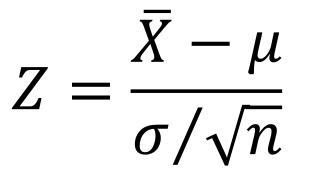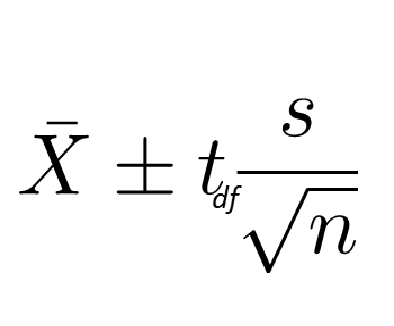Lecture 7: Confidence Intervals 1: CLT, Intro to Statistical Inference, Estimates and Standard Errors, Interpretaion of Confidence
1/16
Earn XP
Description and Tags
Feb 12, 2025 Yuan Fang, PhD
Name | Mastery | Learn | Test | Matching | Spaced |
|---|
No study sessions yet.
17 Terms
Random Sampling When
From one population to one sample
Random Sampling Why
Representative sampling
Random Sampling How
Inclusion/Exclusion criteria
Probability based sampling approaches:
Simple random sampling
Systematic sampling
Stratified sampling
Cluster sampling
Multi-stage sampling
Random Sampling Results
Gives us confidence claiming something about the population based on what we found in the sample (confidence about our inference)
Randomization When
From one sample to two treatment groups
Randomization Why
Makes the treatment the biggest difference between the groups
Randomization How
Use probability-based method to separate samples into groups
Randomization Results
Gives us confidence that differences seen in the outcomes between the treatment groups at the end of the study are because of the differences in treatments
Central Limit Theorem Application
Non-normal population
Take samples of size n, as long as n is sufficiently large
The distribution of the sample mean is approximately normal, therefore can use Z-scores to compute probabilities
We can then quantify the variability/uncertainty in the sample mean (estimate of the population mean)
We get confidence intervals from this
We get p-values from this

Central Limit Theroem
The Central Limit Theorem
For any disribution, the sampling distribution of sample means becomes nearly normally distributed as the sample size grows
We will use the normal distribution to quantify uncertainty when we make inferences about a population mean based on the sample mean we take
The sampling distribution of the means is close to Normal if either:
Large sample size if the population not normal
Population close to Normal
Requirements
Independent (The CLT fails for dependent samples. A good survey design can ensure independence.)
Randomly collect sample
Don’t confuse the distribution of the sample and the sampling distribution
Statistical Inference
There are two broad areas of statistical inference: estimation and hypothesis testing
Estimation - the population parameter is unknown, and sample statistics are used to generate estimates of the unknown parameter
Hypothesis testing - an explicit statement or hypothesis is generated about the population parameter; sample statistics are analyzed and determined to either fail to reject or reject the hypothesis about the parameter
In both estimation and hypothesis testing, it is assumes that the sample drawn from the population is a random sample
Estimation
The point estimate is determined first. This is a sample statistic.
Best estimate of the true population parameter based on our data
The point estimates for the population mean and population proportion are the sample mean and sample proportion, respectively
Calculating confidence intervals (or interval estimates) is the process of determining likely values for an unknown population parameter
So, to find the Cl for the population mean or the population proportion, we start with the respective point estimate:
sample mean or the
sample proportion
A point estimate for a population parameter is the “best” single number estimate of that parameter
Confidence interval is a range of values for the parameter
point estimate ± margin of error
A confidence interval estimate is a range of values for the population parameter with a level of confidence attached (e.g., 95% confidence that the range or interval contains the parameter)
Could be 90% or 99% or 98% or…
Interpretation
Remember the truth that we are trying to estimate is fixed
So, we can NEVER say that there is a 95% chance or 95% probability the parameter is in the interval. The truth either is in out confidence interval or it is not. We WILL NOT assign a probability to it
This is why we ONLY use the word “confidence” and interpret from your perspective
Interpreting confidence intervals: “I am 95% confident that between 45% and 75% students had flu shots in 2019
OR
I am 95% confident that the true proportion of students who had flu shots is between 0.45 and 0.75, or between 45% or 75%
Confidence Interval Estimates
point estimate ± margin of error
point estimate ± critical value x SE (point estimate)
SE (point estimate) = standard error of the point estimate. This is the standard deviation of the sampling distribution
Critical value comes from the percentiles of the sampling distribution for the sample statistic
It tells you the number of SEs needed for 95% (if constructing a 95% CI) of random samples to yield confidence intervals that capture the true parameter value
Critical value has to do with a level of confidence (90%, 95%, 99%, etc)
The level of confidence reflects how likely it is that the CI contains the true, unknown parameter. It comes from the probabilities related to the sampling distribution
Remember, this is NOT the probability regarding the population parameter
CI for the population mean μ
Higher confidence levels have larger z values, which translate to larger margins of error and wider CIs. For example, to be 99% confident that a CI contains the true unknown parameter, we need a wider interval
We have used s instead of σ. If we know σ, we should use σ
The above formula works OK when we have larger samples
For smaller samples, if we are using 1.96 (from a normal distribution) for a 95% confidence level, we run into issues (this number is too small)
We need a new sampling distribution of the sample mean then
This is called the t-distribution
Unless you know that the population is normally distributed or you know the true population standard deviation is σ, when constructing CIs for the population mean, use the t-distribution
SKIN: standard deviation known is normal
SUIT: standard deviation unknown is t
CI for population proportion, the t-distribution is not used, always use normal
The t distribution is another probability model for a continuous variable
The t distribution takes a slightly different shape depending on the exact sample size
t distributions are indexed by degrees of freedom (df) which is defined as n - 1
If df = ∞, the t distribution is the same as the normal distribution
It is important to note that the approximate use of the t distribution assumes that the variable of interest is approximately normally distributed
Specifically, the t values for CIs are larger for smaller samples, resulting in larger margins of error
i.e., there is more imprecision with small samples

Really large sample size, or variable population normally distributed

Good default. Especially good for smaller sample size
